The guitar produces sound through direct contact with the strings by the player's fingers. In contrast, the piano generates sound when the keys are struck, causing hammers to hit the piano strings, so the performer does not directly touch the strings.
On the other hand, the piano requires regular tuning by a technician to maintain its pitch, which can be a costly maintenance necessity. Typically, after playing, one simply wipes the keys to remove any dirt and places a felt cloth over them before closing the instrument.
Guitar strings are susceptible to deterioration from sweat and oil, which can accelerate their wear. Depending on the player's body chemistry, the strings may become difficult to play within a day if not properly maintained. Additionally, playing for long periods will inevitably lead to string degradation, which is unavoidable.
Professional guitarists who are serious about their craft often change their strings before every live performance to avoid any decline in quality.If a string breaks during a gig, it can be quite a problem, and top professionals often notice any deterioration in their strings even within a single day.
Studio musicians who are mindful of tuning stability and string freshness often change their strings after recording each song.
Amateur guitarists may not need to be as meticulous, but they should consider changing their strings if they notice tuning issues or if the sound of their chord strumming starts to feel dull.
Playing with old strings is more harmful than beneficial, and I can say that with confidence.
What are the drawbacks of continuing to play with old strings?
First, there’s the deterioration of tone. The bright sound of new strings fades, and if you get used to the muddy tone, it can be detrimental to your ears. Additionally, tuning becomes unstable.
Next is playability. Especially with slide playing, old strings can snag on your fingers, making it hard for them to glide smoothly. I believe this is the biggest source of frustration when continuing to use old strings!
And what’s particularly concerning is fret wear. Using rusty strings can be likened to sanding down the frets. Replacing frets is one of the repairs I want to avoid the most.
However, it’s not realistic for amateur guitarists to change their strings every day. While strings used to cost around 500 yen, nowadays it's not uncommon to find sets priced over 1,000 yen. Spending several thousand yen on strings each month can be quite burdensome.
So, how can amateur guitarists play comfortably without frequently changing their strings?
I can relate this has been a long-standing concern for me as well.
A friend of mine mentioned that they wipe down the strings with tissue after playing. On the other hand, I've heard of someone who leaves their rusty strings as they are.
For a long time, music stores have offered spray-type string lubricants that can be sprayed directly onto the neck or onto a cloth to wipe down the strings.
TONE / FINGER EASE Guitar String Cleaner and Fretboard Lubricant
So, how have I been maintaining my guitar until now?
Let me share openly the method I’ve been using for several decades.
First, I grab a cloth to wipe down the strings. Next, I use GHS's Fast Fret from a cylindrical container to apply it to the strings. After that, I just let it sit.
GHS / FAST-FRET Fretboard Lubricant
I've been maintaining my guitar this way for many years.
What I'm introducing this time is a method using four items that allows you to change your strings just once a month. This is based on playing about 5 to 10 hours per week. By the way, I don't sweat much on my hands.
Items Needed
① DR (D.R.) / Stringlife Liquid Polymer
② THE STRING CLEANER / The String Cleaner
③ MUSIC NOMAD / MN205
④ MONTREUX / Montreux Original Fret Guard [1033]
⇧Additionally, you can use soft paper from local newsletters or a fret guard.
My Maintenance Method
- After finishing playing, I first apply Stringlife Liquid Polymer to the yellow cloth of The String Cleaner, using just enough to lightly coat the strings.
- Then, I gently slide The String Cleaner along the strings.
- Occasionally, I also slide the cloth on one side of the strings without pinching them with The String Cleaner, to ensure the surface is well-treated.
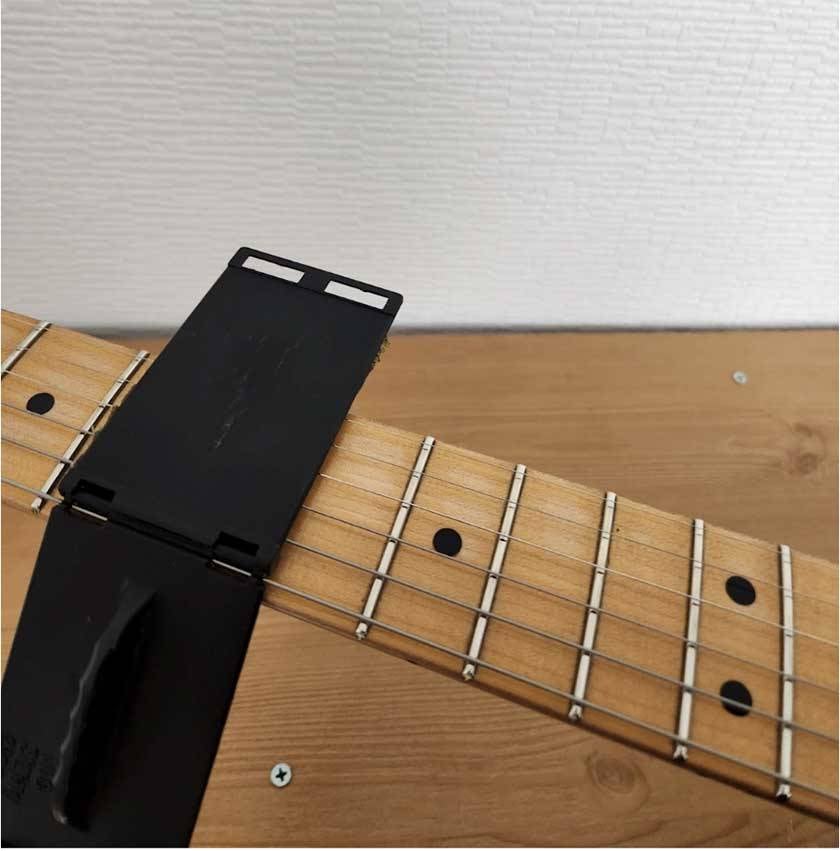
- I insert a fret guard or soft paper that matches the width of the neck between the strings and frets.
- Depending on how often I use the string cleaner, I apply Stringlife to the cloth part of the MUSIC NOMAD MN205 and gently wipe the strings to reduce the frequency of application.
By following these steps, I can play for a month without feeling any discomfort in my fingering. While there may be some limitations in the beauty and resonance of the chords, it doesn't bother me too much during practice.
The string cleaner is an excellent product for cleaning strings, but it does have some drawbacks, such as the plastic body being prone to breaking and the cloth used for wiping the strings easily coming off.
As a personal solution, I found that when the plastic body starts to crack, applying super glue immediately helps prevent further damage and extends its lifespan.
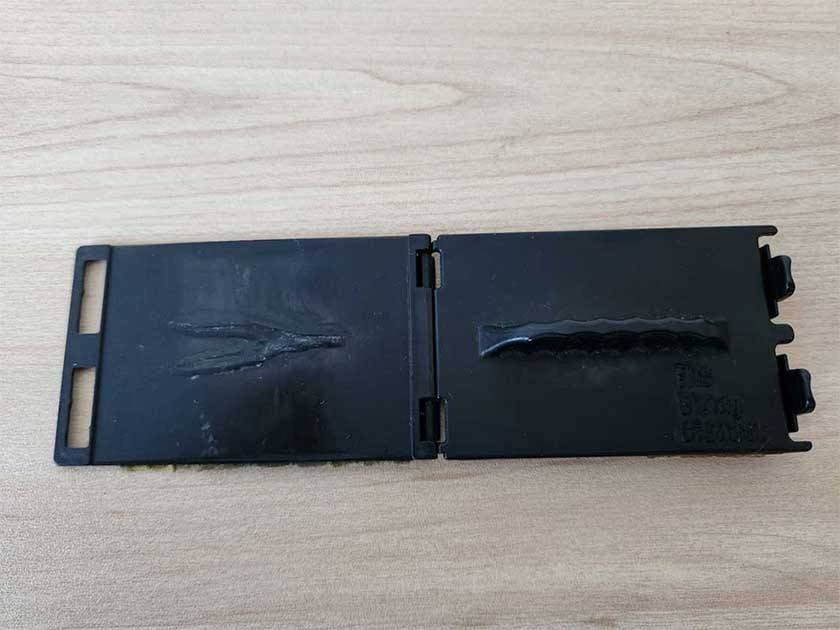
I applied super glue in a tuning fork shape (Y-shaped) to the cracking string cleaner, and I've been able to use it for several years without any further breaks.
If the yellow cloth starts to come off, reinforcing it with glue early on should solve the problem. If you experience issues with it coming off shortly after use, it's likely due to applying too much pressure. By sliding it gently without applying force, this product can last a long time. I've replaced it several times, but it can be used for years. I recently got a new one, and comparing the dirty one to the new one shows that with some clever usage, the string cleaner can be a durable product.
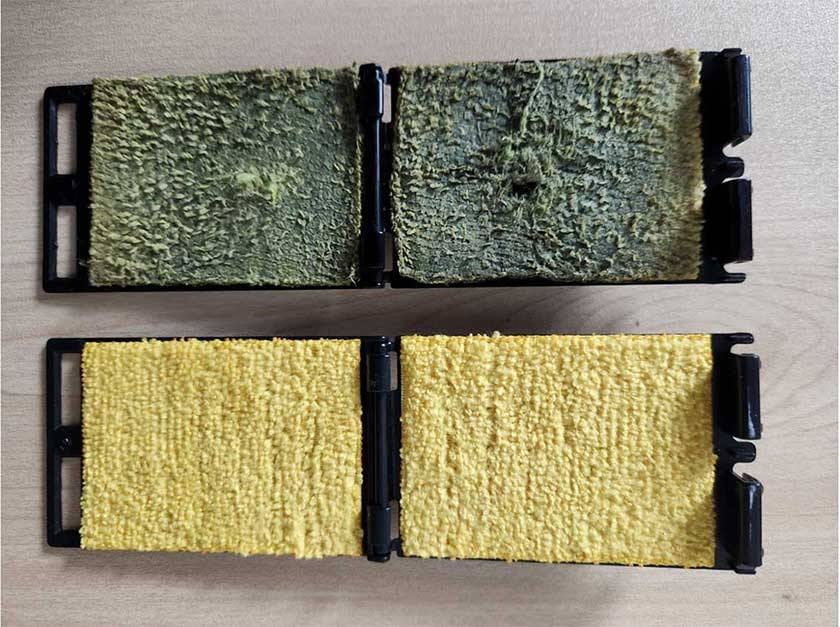
Seeing the comparison between a new product and a well-used one, I think people will be surprised to realize just how long-lasting this gear can be.
The liquid Stringlife Liquid Polymer is a relatively new product that has emerged in recent years. While it is somewhat more expensive compared to traditional maintenance products, it offers unique features that set it apart.
This product allows you to apply the liquid from the sponge directly onto the strings, and after letting it sit for a day, the strings become coated. I've been using it since last year, and I find it to be a groundbreaking product. Additionally, the product page on Sound House includes related videos, so I recommend checking them out. They explain the benefits of the coated strings on YouTube.
Having one bottle lasts a long time, so while the price per unit is higher, considering its effectiveness and volume, I believe it offers good value compared to traditional products.
The step of placing soft paper between the strings and frets is recommended for absorbing moisture and protecting the frets when the guitar is not in use.This is an original method I recently came up with. I use a page from a local newsletter that regularly comes in the mail, folding it up each week. For my main guitar, I change the paper weekly. It’s free, and after a week, I can see how it absorbs moisture, especially during this season. Plus, if I display the horoscope section on top, it adds a bit of fun!
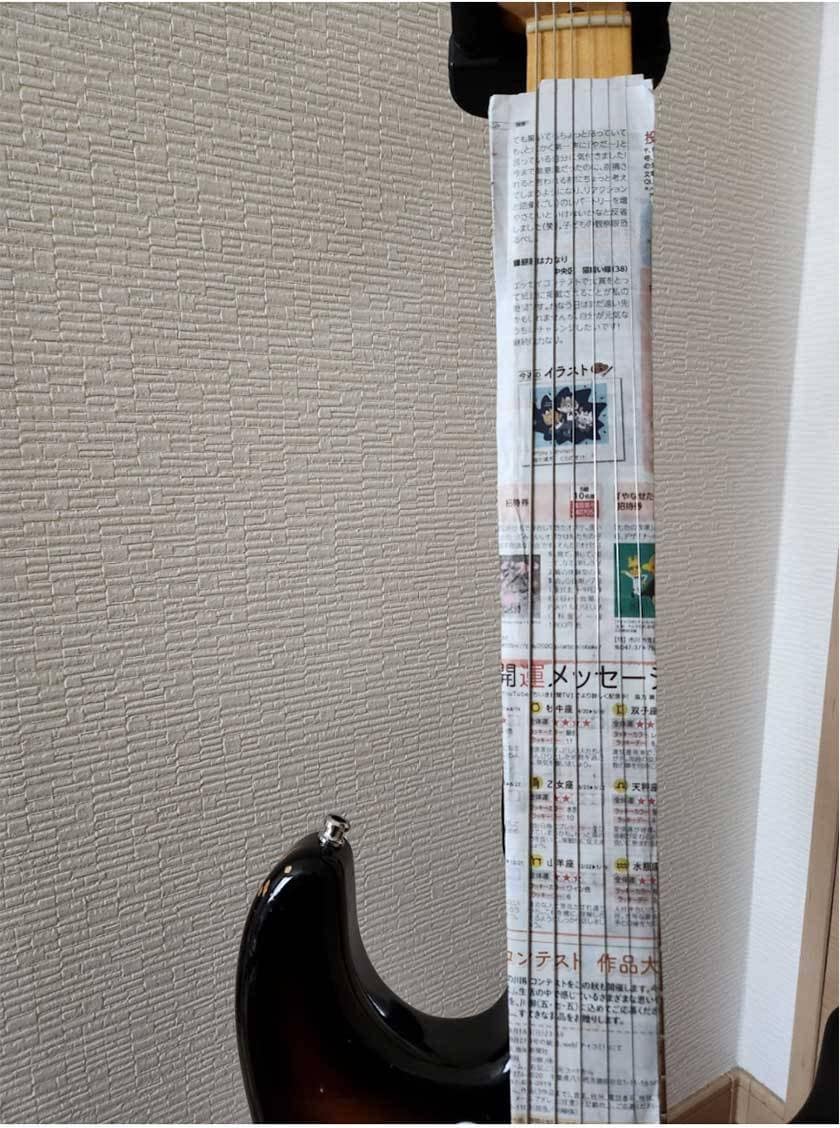
Considering aesthetics, luxury, durability, and convenience, commercially available products are likely the better choice. Plastic options are easy to find and sturdy, but it's important to be cautious as they can degrade and crack over time.
The fret guard helps prevent wear on the frets during transport, so it's important to attach it carefully to the neck and use it properly. I believe it also serves to protect the fretboard.
That concludes my personal approach to string maintenance.
The “sound & person” column is made up of contributions from you.
For details about contributing, click here.





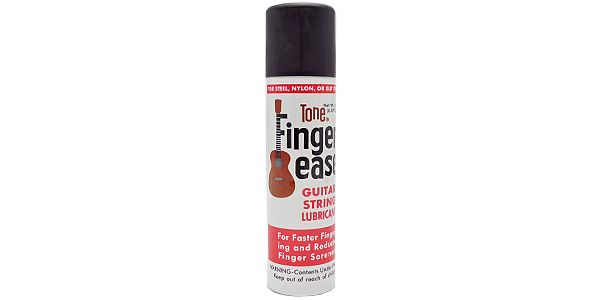
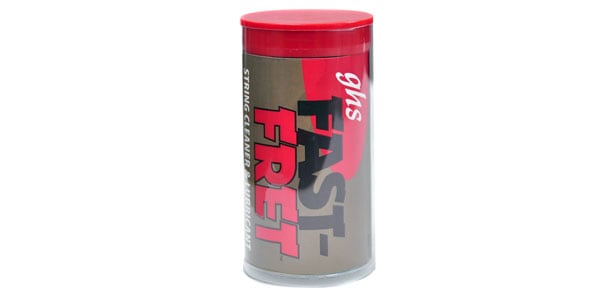
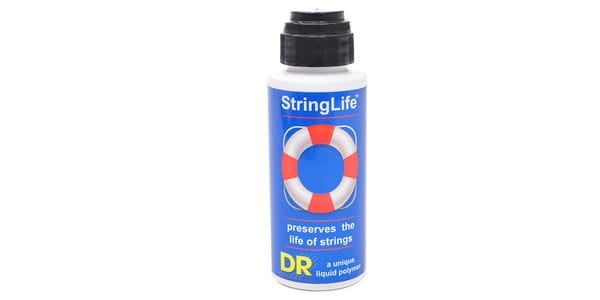
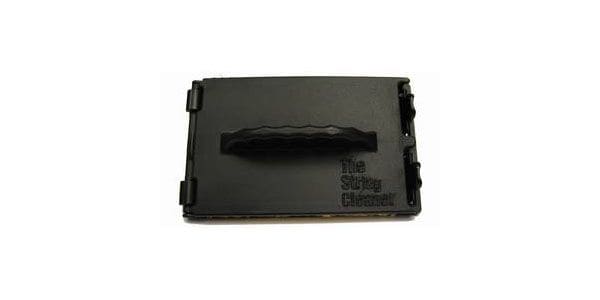

![MONTREUX / Montreux Original Fret Guard [1033]](https://www.soundhouse.co.jp/images/shop/prod_img/m/montreux_1033a.jpg)



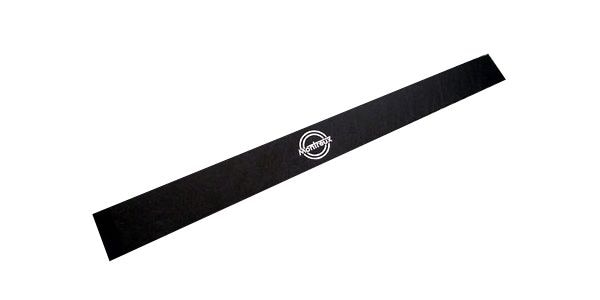








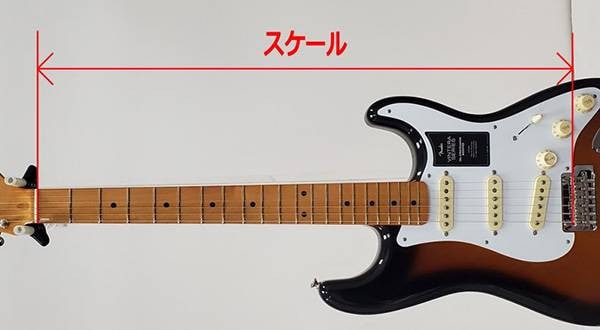


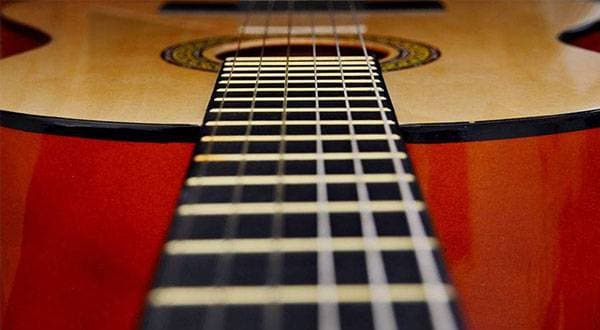
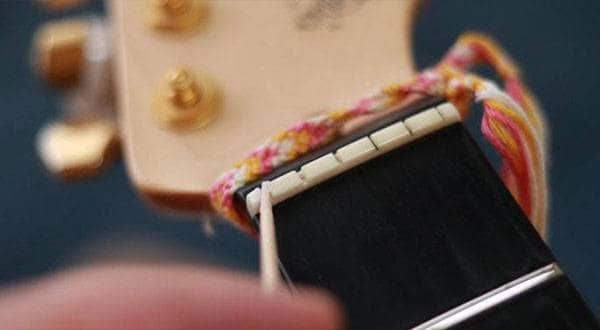
![Takayoshi Ohmura Electric Guitar String Comparison Review [3 Types of SIT STRINGS]](/contents/uploads/thumbs/5/2019/9/20190920_5_7742_1.jpg)
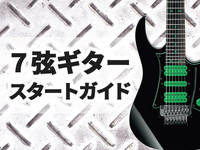 7弦ギタースタートガイド
7弦ギタースタートガイド
 DIY ギターメンテナンス
DIY ギターメンテナンス
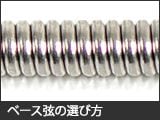 ベース弦の選び方
ベース弦の選び方
 ベース弦の張り替え方法
ベース弦の張り替え方法
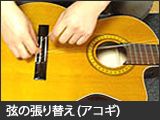 弦の張り替え(アコースティックギター)
弦の張り替え(アコースティックギター)
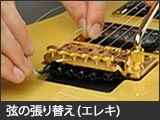 弦の張り替え(エレキギター)
弦の張り替え(エレキギター)















